Creating a nursery is one of the most exciting aspects of preparing for your little one’s arrival. This special space will be where countless milestones unfold—from first smiles to early reading sessions. As we step into 2025, nursery design is evolving beyond traditional pink and blue color schemes to embrace more personalized, functional, and sustainable approaches. According to recent trends highlighted by The Bump, modern parents are prioritizing spaces that grow with their children while reflecting their unique family stories. The nursery isn’t just about aesthetics; it’s about creating a nurturing environment that supports your baby’s development and makes late-night feedings feel less daunting. With thoughtful planning, you can design a space that’s both beautiful and practical—where safety meets style without compromising on comfort.
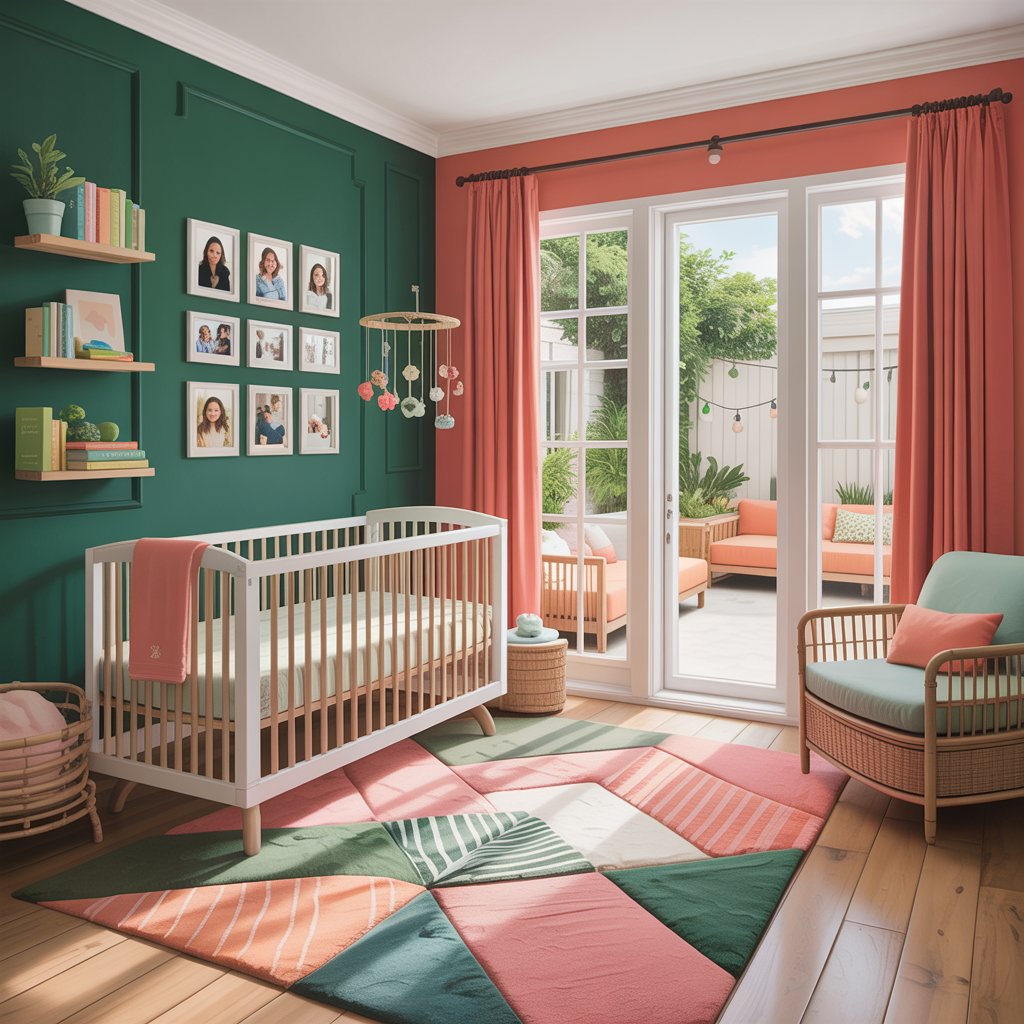
Nature-Inspired Nursery Themes: Bringing the Outdoors In
- Woodland, jungle, and forest themes continue to dominate 2025 nursery trends
- Natural materials like rattan, bamboo, and reclaimed wood create warmth
- Earthy color palettes of sage green, terracotta, and soft browns set calming tones
- Botanical prints and animal motifs add playful elements without overwhelming the space
Nature-inspired nurseries are experiencing a renaissance in 2025, moving beyond simple wall decals to create immersive environments that connect babies with the natural world. Interior designers are incorporating organic textures through woven wall hangings, macrame mobiles, and wooden accent furniture that brings the outdoors in. According to The Every Mom, these nature-based themes not only create visually appealing spaces but also provide developmental benefits by exposing infants to varied textures and patterns that stimulate cognitive growth.
The trend extends to sustainable choices, with parents increasingly seeking eco-friendly materials that are both safe for babies and gentle on the planet. Reclaimed wood furniture, organic cotton textiles, and non-toxic paints are becoming standard rather than specialty items. “Parents want their nurseries to feel like a peaceful retreat that supports both their baby’s development and their own well-being,” explains interior designer Sarah Chen. “Nature themes provide that perfect balance of calming aesthetics and developmental stimulation.”
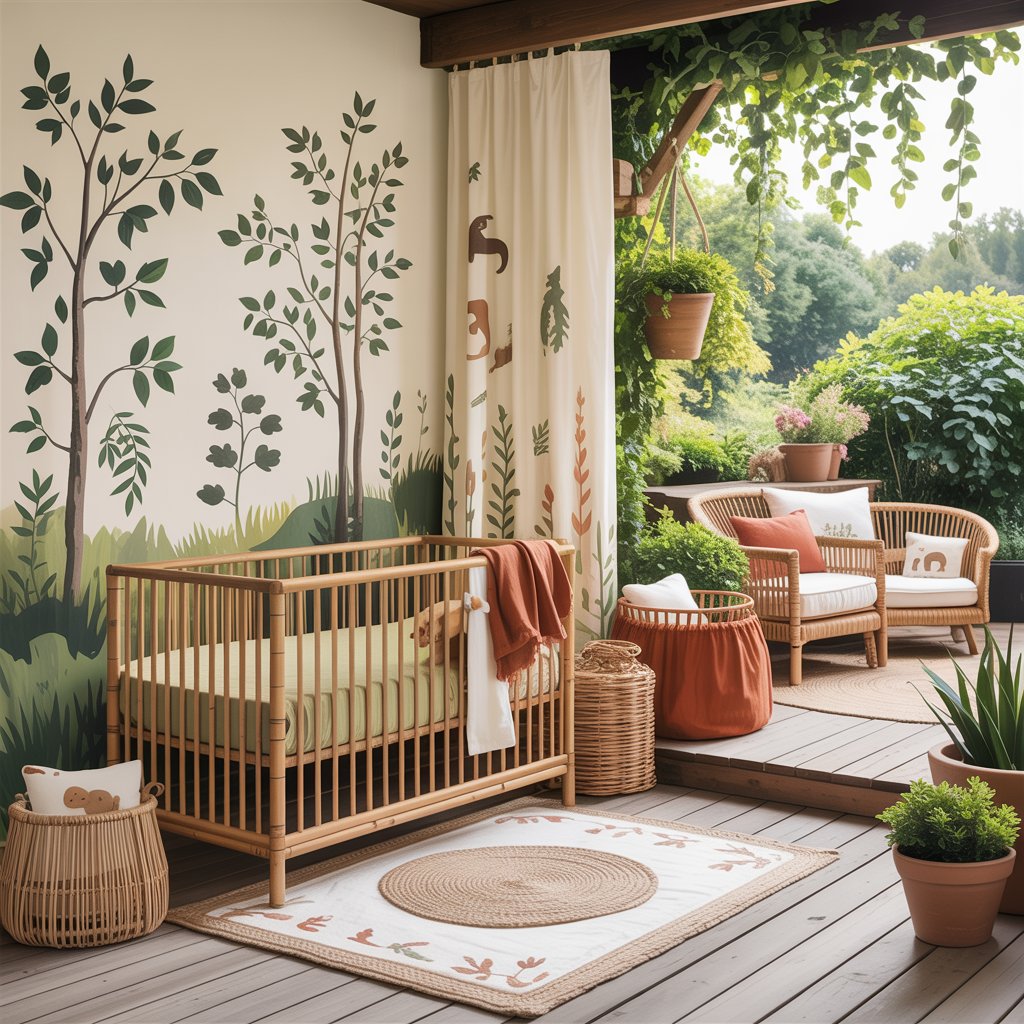
Pro Tip: Choose light-filtering natural fiber window treatments instead of heavy drapes. They create a soft, diffused light that’s ideal for naps while reducing glare during playtime.
Gender-Neutral Color Palettes: Beyond Pink and Blue
- Soft sage greens, warm terracottas, and muted blues replace traditional gender colors
- Layered neutrals create depth without overwhelming the senses
- Accents in mustard yellow or burnt orange add subtle warmth
- Customizable color schemes allow the room to evolve as your child grows
The era of pink for girls and blue for boys is fading as more parents embrace gender-neutral color palettes that create serene, welcoming spaces. These modern color schemes focus on earthy tones and subtle variations that create a calm atmosphere conducive to rest and play. According to Nurture and, neutral palettes also make it easier to repurpose furniture as your child grows into toddlerhood.
The beauty of gender-neutral nurseries lies in their versatility—they can easily transition from infant room to play space without requiring a complete overhaul. By choosing base colors that work for any child, you’re creating a space that grows with your family rather than becoming obsolete after the first year. Consider pairing a soft beige wall with accent walls in muted tones that can be changed as your child develops preferences.
| Color Palette | Best For | Mood Created | 2025 Trend Status |
|---|---|---|---|
| Earthy Neutrals (Sage, Terracotta, Beige) | Calming environments | Warm, grounded | Hot trend |
| Soft Pastels (Dusty Blue, Blush Pink) | Traditional nurseries | Dreamy, gentle | Steady popularity |
| Monochrome (Black, White, Gray) | Modern aesthetics | Crisp, sophisticated | Growing in popularity |
| Jewel Tones (Emerald, Sapphire) | Bold statement rooms | Rich, dramatic | Emerging trend |
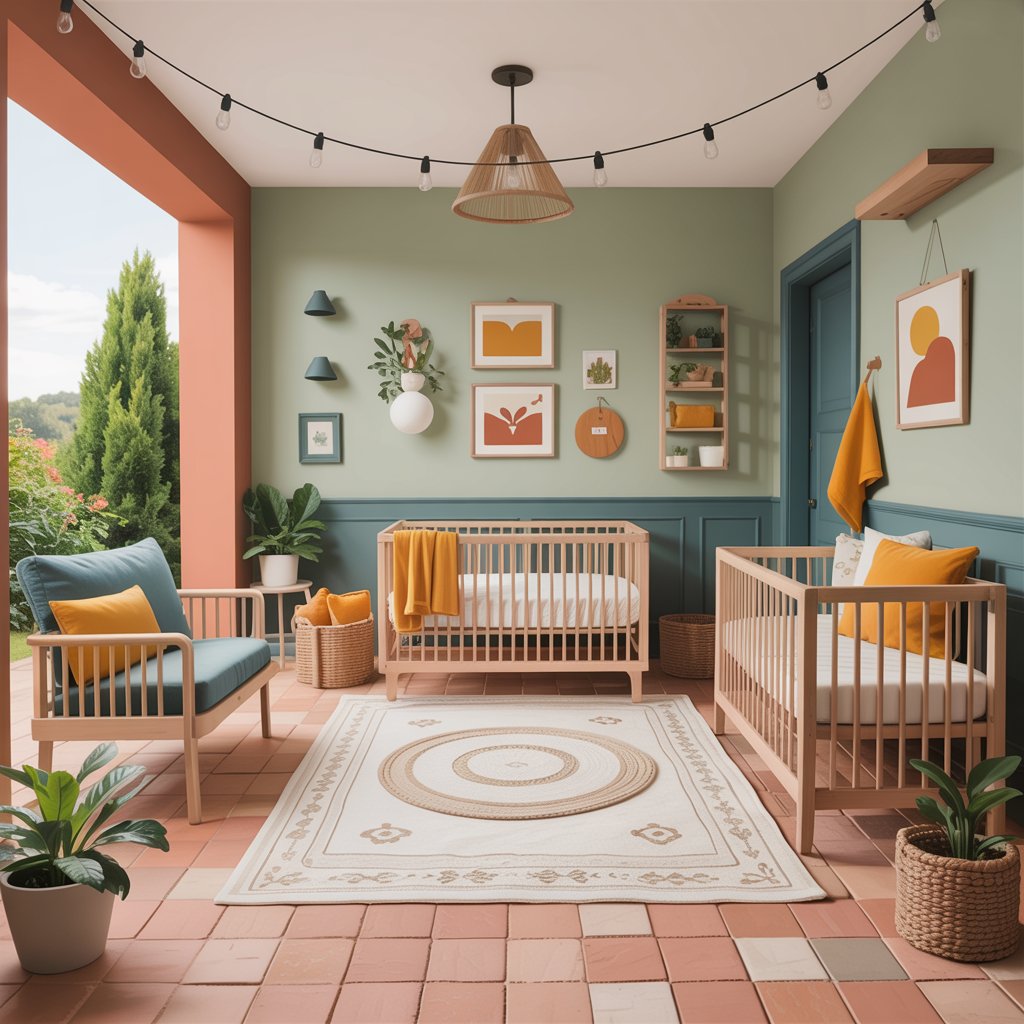
Pro Tip: Test paint colors on large swatches at different times of day before committing. Natural light changes throughout the day can dramatically affect how a color appears in the nursery.
Custom Wall Murals and Removable Wallpaper
- Hand-painted murals create personalized storytelling environments
- Removable wallpaper offers temporary design flexibility without damaging walls
- Themed murals featuring constellations, forests, or cityscapes spark imagination
- Modern murals incorporate subtle patterns that won’t overwhelm as children age
Wall murals have evolved from simple decals to sophisticated art installations that transform entire nursery walls into captivating landscapes. The 2025 trend focuses on custom, hand-painted designs that reflect family heritage or personal stories, creating a unique backdrop for childhood memories. According to The Bump, removable wallpaper is becoming increasingly popular among renters and parents who want design flexibility without committing to permanent changes.
The beauty of modern murals lies in their scalability—they can be designed to grow with your child, with elements that remain relevant as your baby transitions to toddlerhood. Consider a mural that starts with simple shapes for infants but reveals hidden details that become more engaging as your child develops visual acuity. “The right mural becomes a visual companion that grows alongside your child,” notes mural artist Marcus Wright.
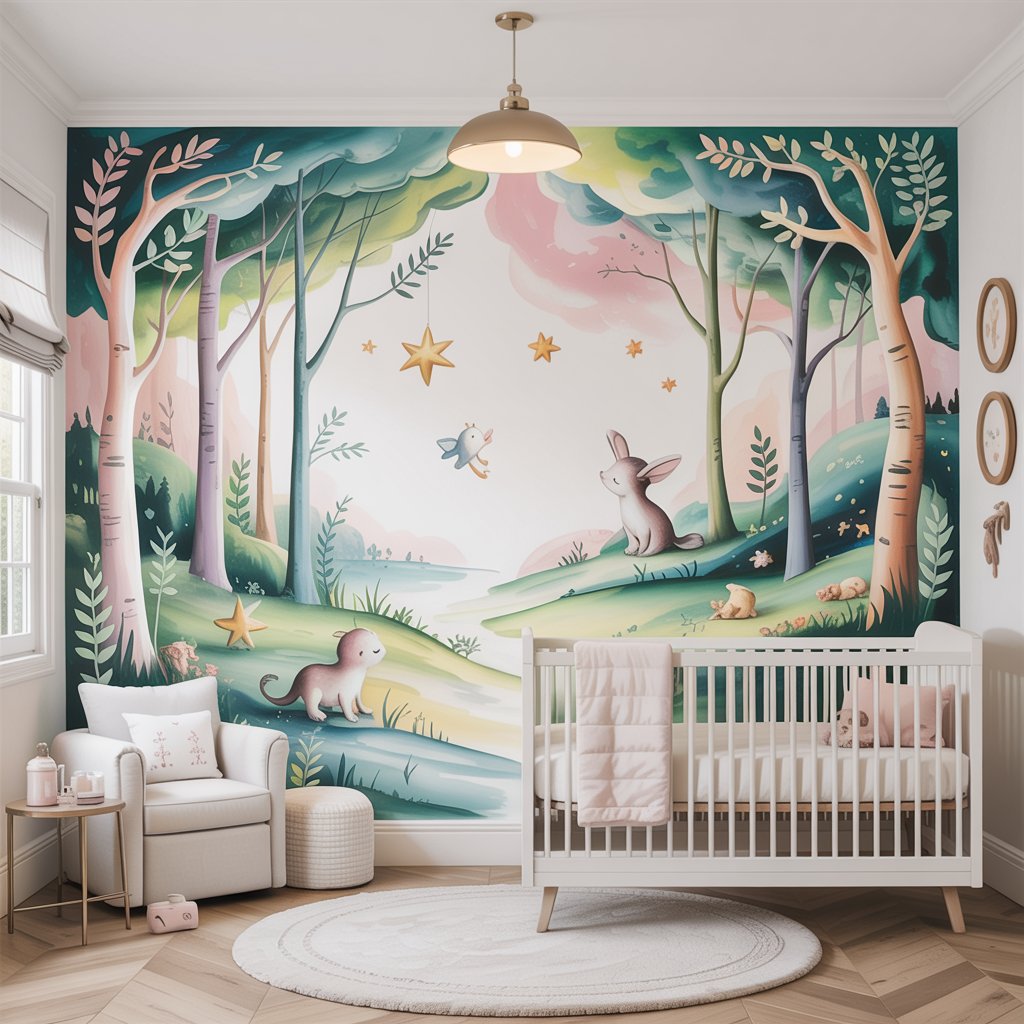
Pro Tip: When using removable wallpaper, apply it to one accent wall rather than the entire room. This creates visual interest while maintaining flexibility for future changes.
Personalized Name Signs and Monogram Art
- Custom name signs with unique typography add personalized charm
- Monogrammed textiles create cohesive design elements throughout the space
- Interactive name puzzles serve as both decor and early learning tools
- Name signs in various materials (wood, fabric, metal) accommodate different styles
Personalized name signs have moved beyond basic wooden plaques to become sophisticated design elements that anchor the nursery’s aesthetic. The 2025 trend features custom typography in unexpected materials like woven rattan, embroidered linen, or even light-up neon. According to Nurture and, parents are increasingly using name signs as focal points that tie together the room’s color scheme and theme.
Beyond traditional wall displays, name signs now serve multiple purposes—some incorporate growth charts, while others double as sound machines or night lights. Consider choosing a name sign with removable elements that can be updated as your child grows, extending the piece’s lifespan well into the toddler years.
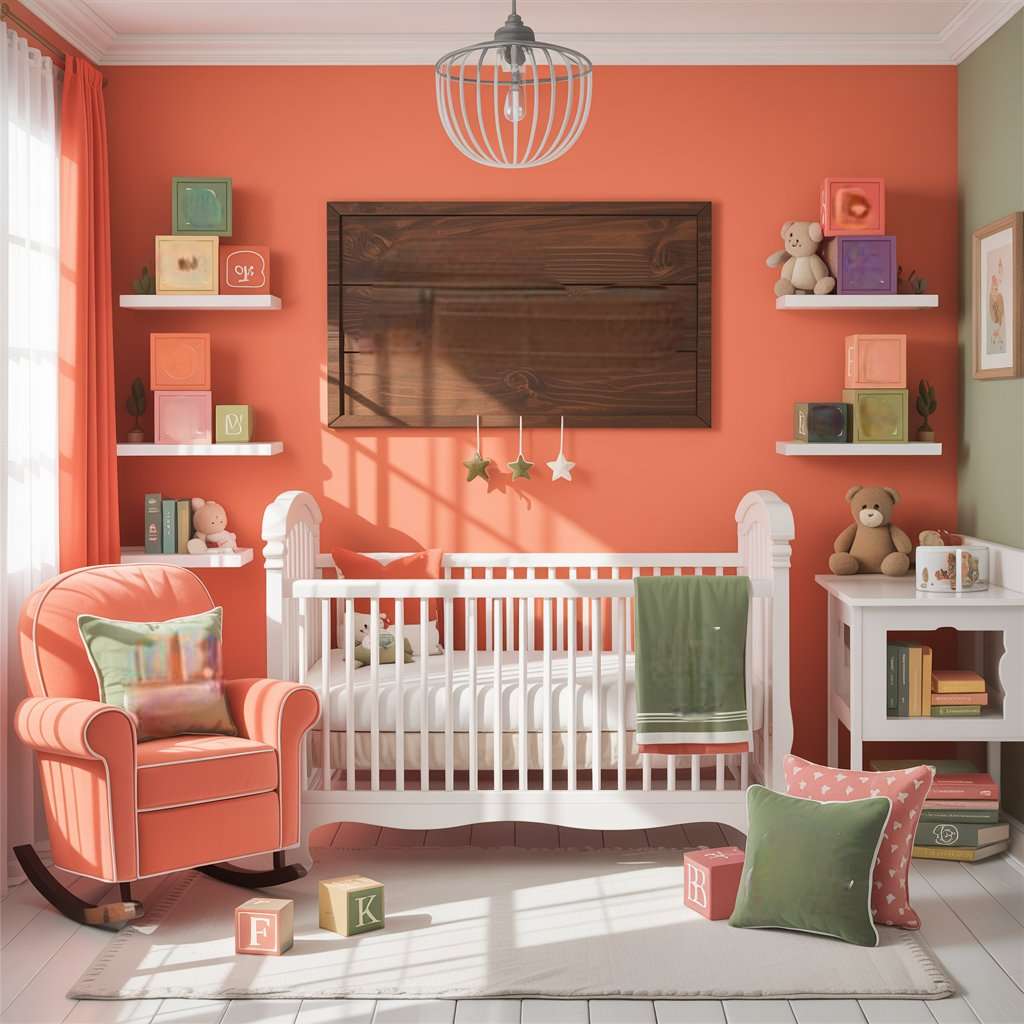
Pro Tip: Match your name sign’s material to other elements in the room for a cohesive look—wooden signs pair beautifully with rattan furniture, while fabric signs complement textile-heavy designs.
Themed Nurseries That Spark Imagination
- Space-themed nurseries with glow-in-the-dark constellations
- Underwater worlds featuring aquatic creatures and ocean blues
- Cityscape designs with skyline silhouettes and urban elements
- Literary themes based on favorite children’s books and characters
Themed nurseries are experiencing a renaissance in 2025, but with a modern twist—parents are moving away from overwhelming, single-character themes toward more sophisticated concepts that evolve with their children. According to The Every Mom, the most popular themes now incorporate multiple elements that create immersive environments without being too prescriptive.
The key to a successful themed nursery is balance—using the theme as inspiration rather than a strict template. A space theme might include subtle constellation patterns in the bedding, a moon-shaped night light, and a few carefully selected decor pieces rather than covering every surface with rockets and planets. This approach creates a cohesive look that won’t feel dated when your child’s interests change.
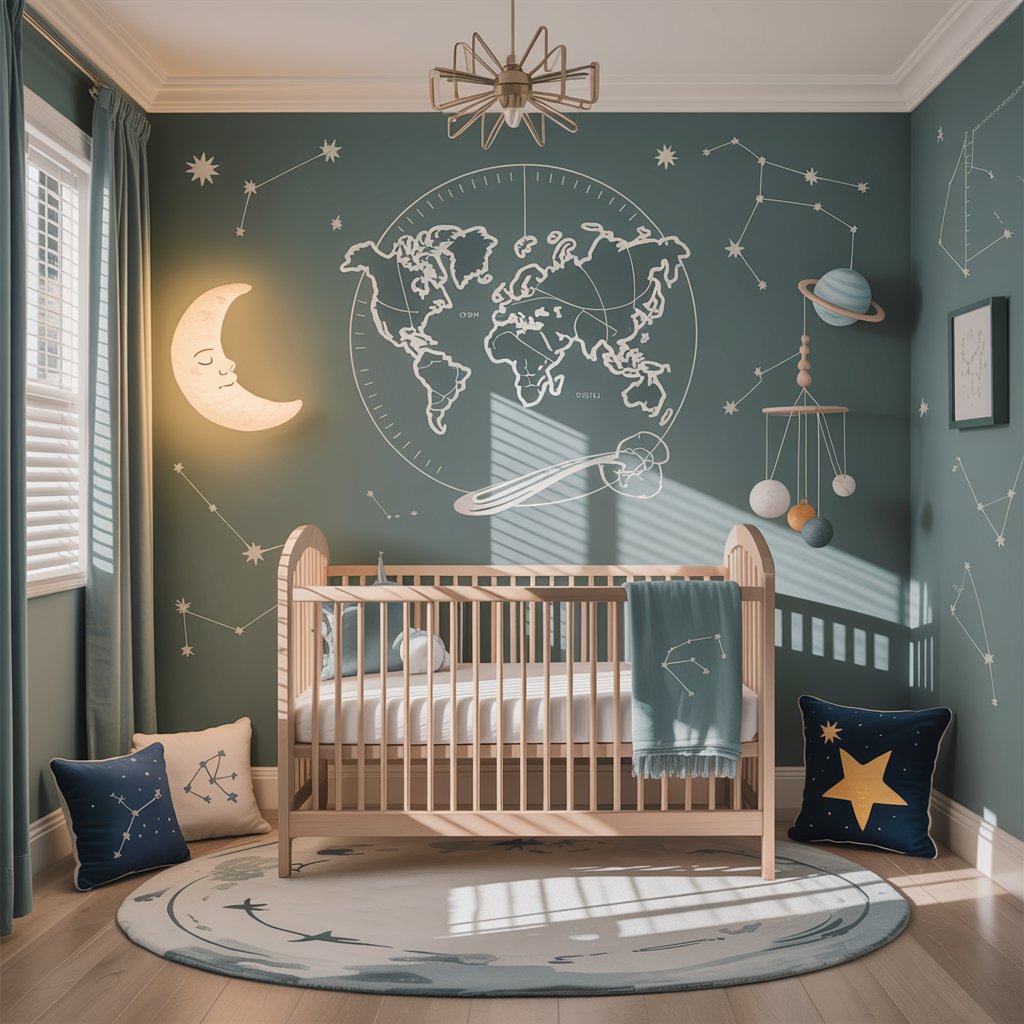
Pro Tip: Start with one statement piece that represents your theme (like a custom mural or unique mobile) then build around it with complementary elements rather than matching sets.
Smart Storage Solutions for Small Spaces
- Multi-functional furniture with hidden storage compartments
- Wall-mounted shelves and baskets maximize vertical space
- Under-crib storage units keep essentials within reach
- Modular storage systems adapt as baby’s needs change
For urban parents and those with limited square footage, smart storage is no longer optional—it’s essential. The 2025 trend focuses on furniture that serves multiple purposes while maintaining a clean, uncluttered aesthetic. According to House Beautiful, the most successful small-space nurseries incorporate storage that’s both functional and beautiful.
Consider a changing table that converts to a toddler desk, or a crib with built-in drawers. Wall-mounted storage keeps the floor clear while providing easy access to diapers and wipes. The key is designing storage that integrates seamlessly with your decor rather than feeling like an afterthought.
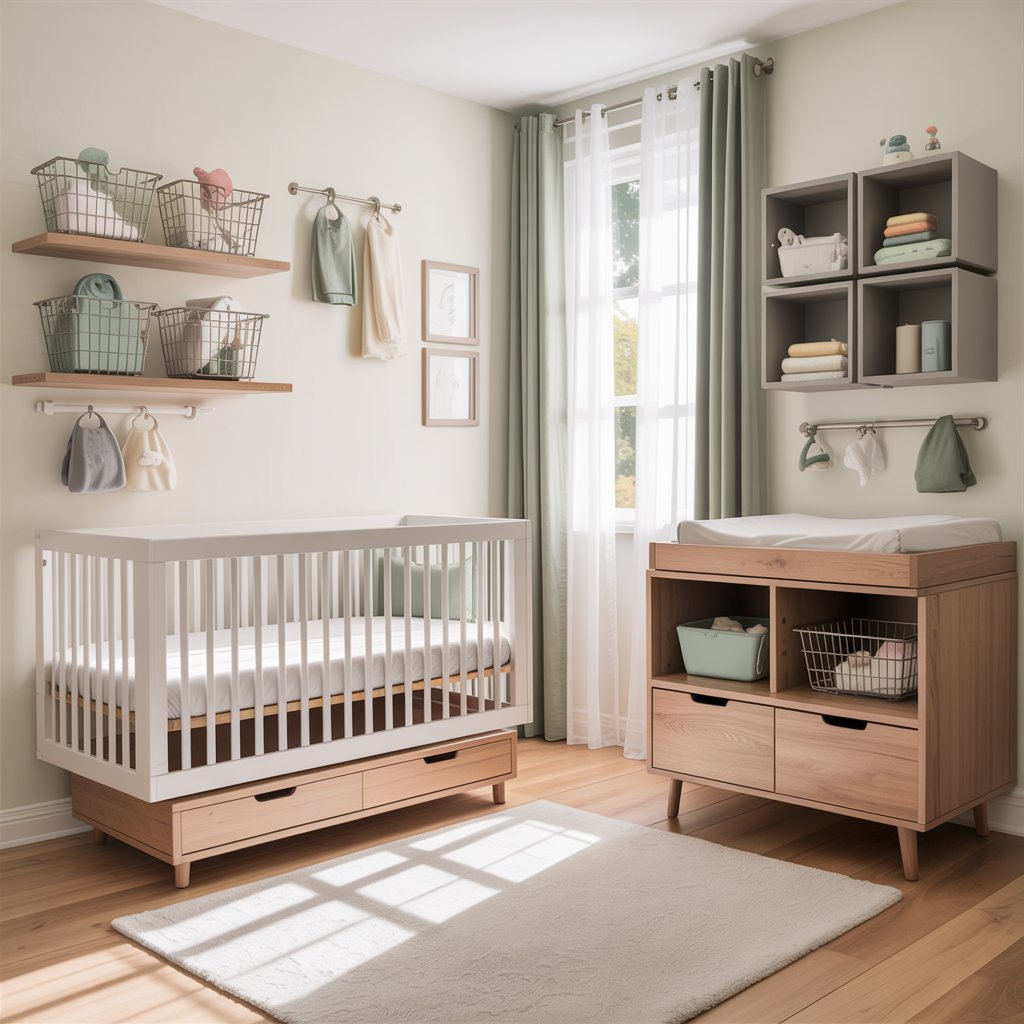
Pro Tip: Use clear or labeled baskets for organizing small items. This makes finding essentials quick during late-night changes while maintaining a tidy appearance.
Cozy Reading Nooks for Bedtime Stories
- Small armchairs with ottomans create comfortable reading spots
- Built-in window seats with storage underneath
- Floor cushions and beanbags for casual story time
- Wall-mounted bookshelves within easy reach of seating
Creating a dedicated reading space in the nursery establishes positive bedtime routines from the very beginning. The 2025 trend emphasizes comfort and accessibility, with seating options designed for both parent and child as they grow together. According to Better Homes & Gardens, nurseries with dedicated reading nooks encourage early literacy and create special bonding moments.
Position your reading nook near the crib for convenient late-night story sessions, and choose seating with good back support for those marathon bedtime routines. Include a small side table for keeping books, a water bottle, and other essentials within reach.
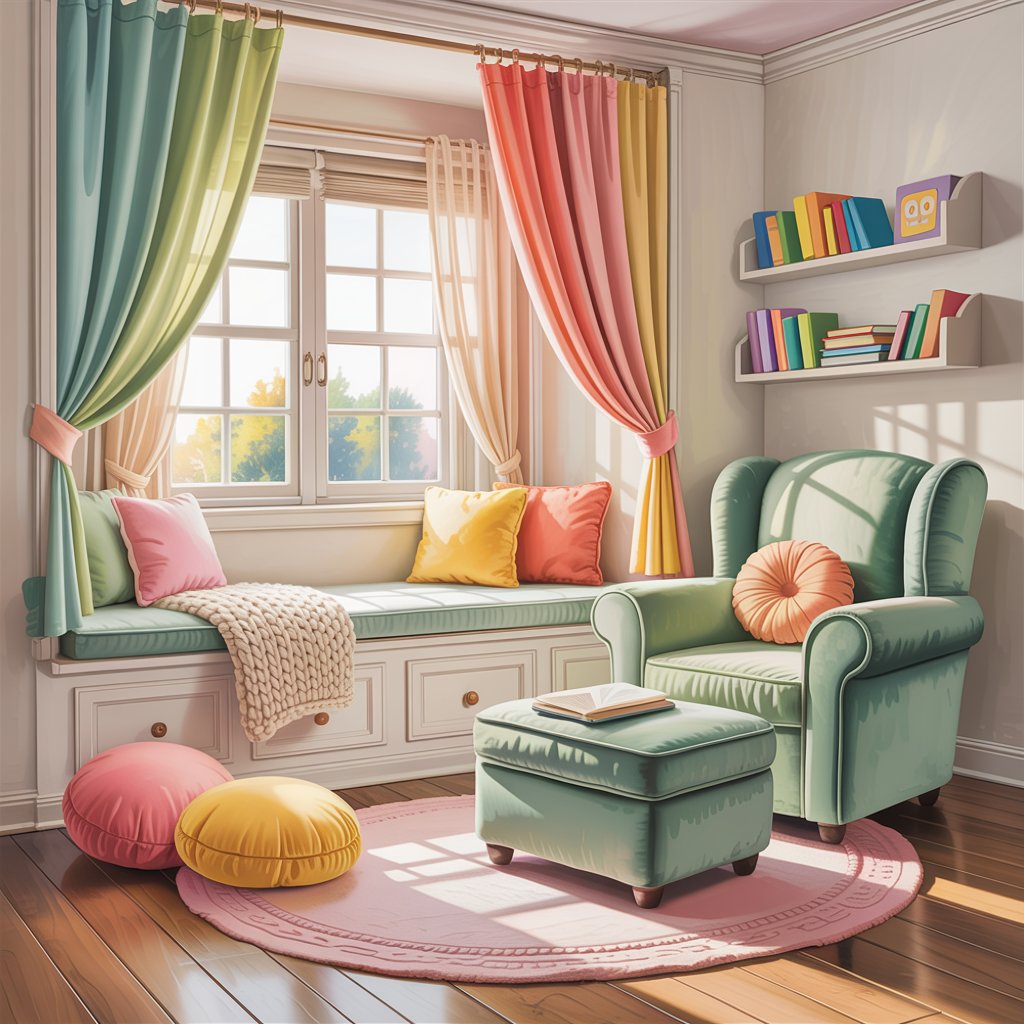
Pro Tip: Install a wall-mounted bookshelf directly above your reading chair to keep favorite books within arm’s reach while saving floor space.
Black and White Contrast Designs for Modern Minimalism
- High-contrast geometric patterns create visual interest for infants
- Monochrome palettes with subtle texture variations prevent visual monotony
- Black metal accents add sophistication to minimalist designs
- White walls with black trim create clean, contemporary lines
The black and white nursery trend has evolved from stark minimalism to sophisticated contrast design that engages developing vision while maintaining timeless appeal. According to The Bump, the 2025 iteration incorporates texture and pattern to prevent the space from feeling cold or clinical.
The key to success with monochrome design is balancing the contrast with soft textures—think white velvet chairs against black-painted walls, or black metal furniture with white linen bedding. Adding subtle metallic accents (like brass or copper) can warm up the space without compromising the clean aesthetic.
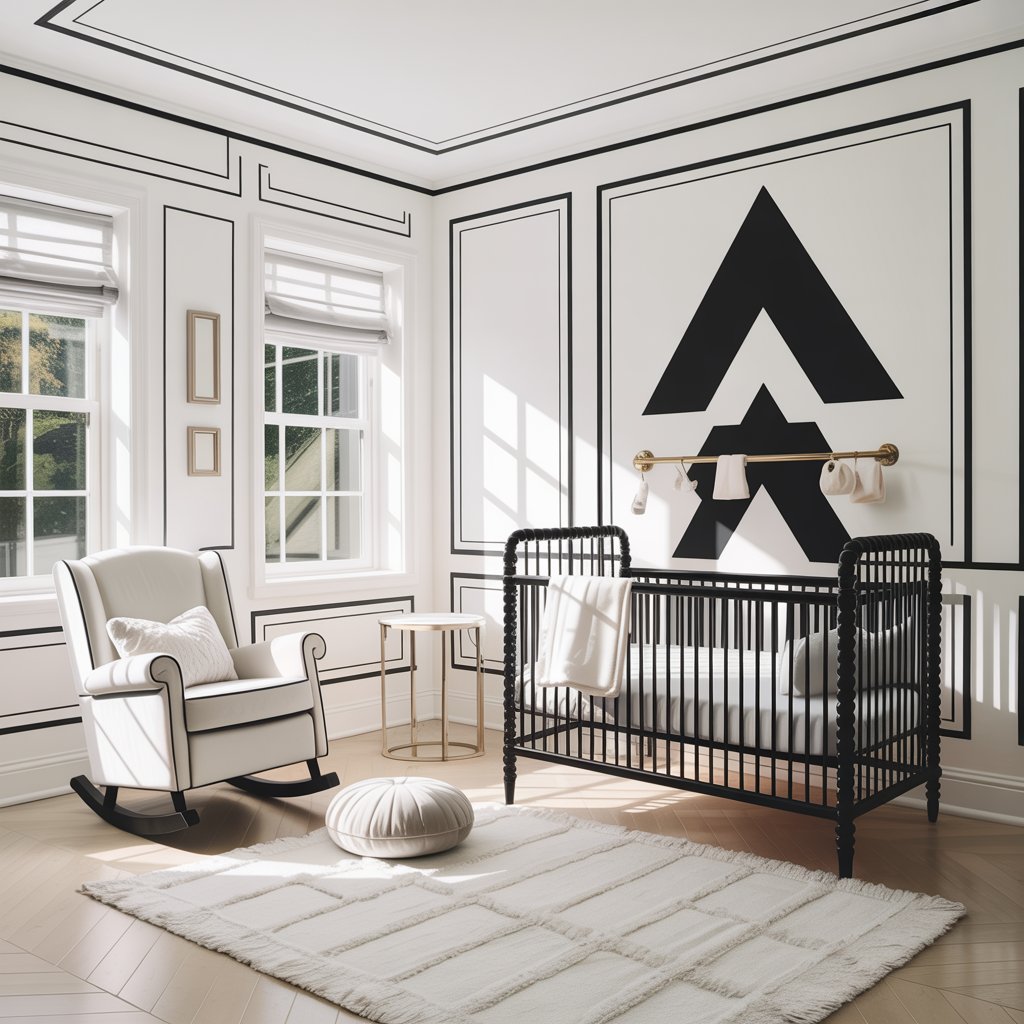
Pro Tip: Use varying shades of white (ivory, cream, off-white) to create depth in what might otherwise feel like a flat, monotonous space.
Vintage-Inspired Nurseries with Timeless Appeal
- Restored antique furniture pieces add character and history
- Traditional patterns like toile and damask updated with modern color palettes
- Vintage-inspired lighting fixtures create warm ambient lighting
- Repurposed heirlooms connect new generations with family history
Vintage-inspired nurseries are making a strong comeback in 2025, but with a modern twist that makes them feel fresh rather than dated. According to House Beautiful, the most successful vintage nurseries blend antique elements with contemporary comfort and safety standards.
The appeal lies in the storytelling aspect—each piece can become a conversation starter about family history. A restored wooden crib that’s been passed down through generations creates immediate emotional connection, while updated vintage patterns on bedding maintain visual interest without overwhelming the space.
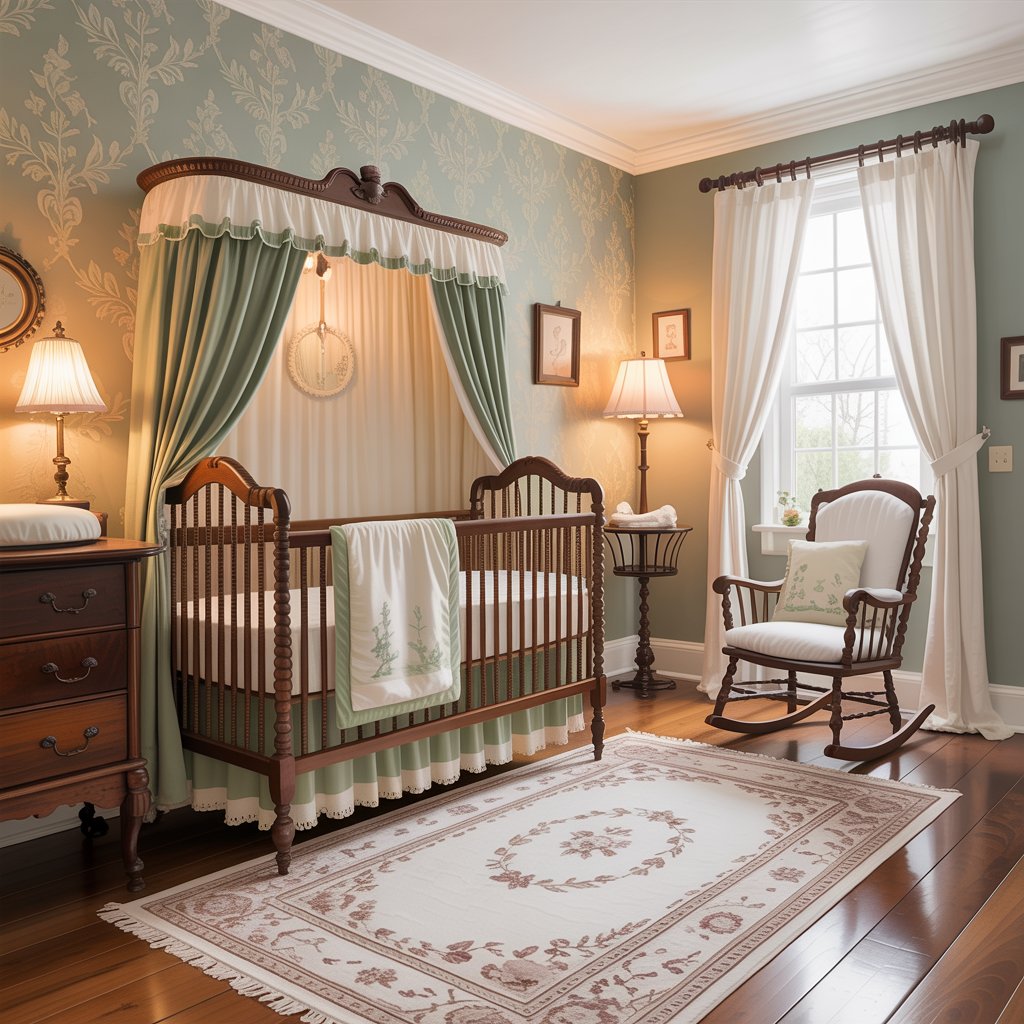
Pro Tip: When incorporating antique furniture, ensure all pieces meet current safety standards for infant use—this may require professional restoration to update hardware and finishes.
Minimalist Modern Nurseries: Less is More
- Clean lines and uncluttered spaces create calm environments
- Quality over quantity approach to furniture and decor
- Strategic use of negative space for visual breathing room
- Functional design that prioritizes baby’s needs over excess decor
Minimalist nurseries have evolved from stark, nearly empty rooms to thoughtfully curated spaces that balance simplicity with warmth. The 2025 trend focuses on intentional design where every piece serves a purpose and contributes to the overall aesthetic. According to Better Homes & Gardens, minimalist nurseries actually help parents by reducing visual clutter that can overwhelm both adults and infants.
The key is quality over quantity—choose a few well-crafted pieces that will stand the test of time rather than filling the space with temporary decor. A simple wooden crib, comfortable rocking chair, and one or two meaningful art pieces create a serene environment that supports healthy sleep and development.
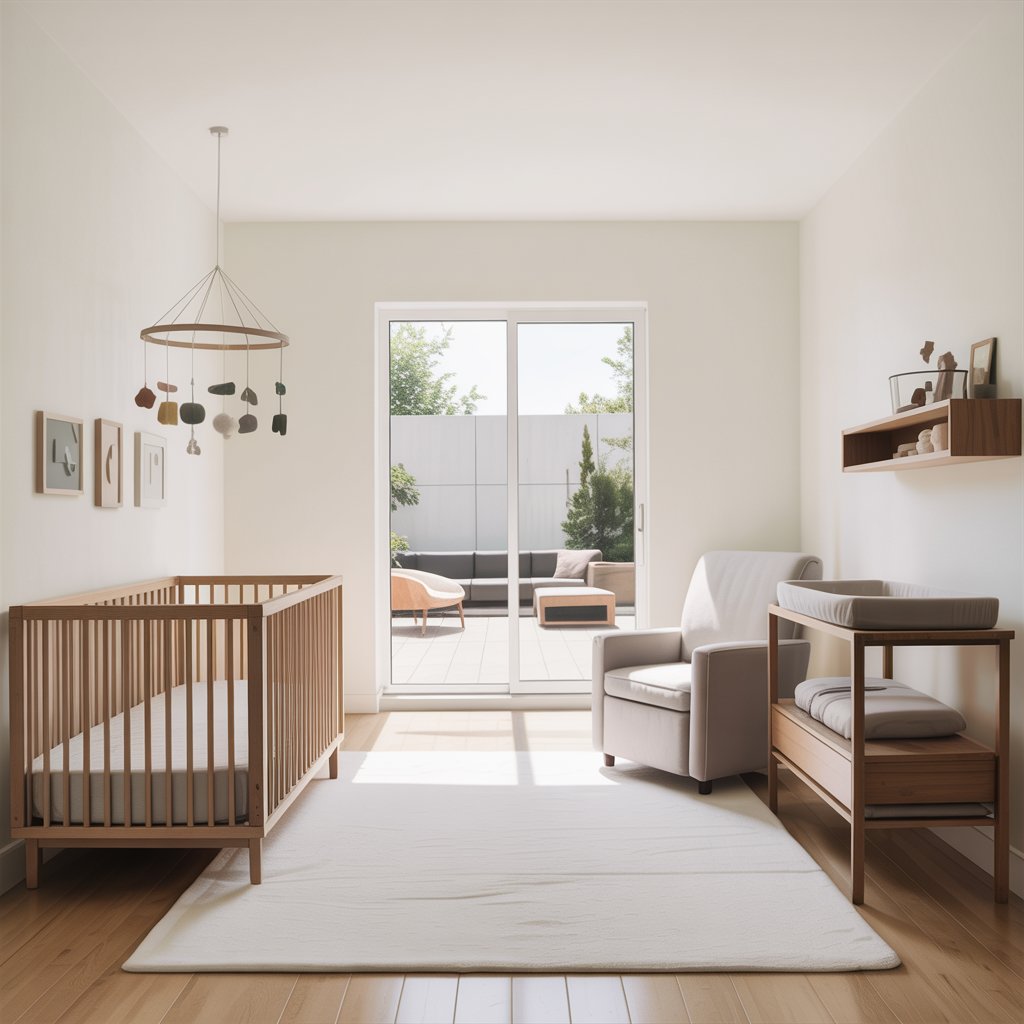
Pro Tip: Before adding any decor item, ask yourself: “Will this still be relevant and useful when my child is two years old?” If not, reconsider its place in the nursery.
Interactive Wall Elements for Baby’s Development
- Textured wall panels for tactile exploration
- Removable felt boards for changing displays
- Growth charts that double as art pieces
- Light-up elements that respond to touch or sound
Interactive wall elements are transforming nurseries from static spaces into dynamic environments that support your baby’s development. The 2025 trend focuses on multi-sensory experiences that engage infants while maintaining aesthetic appeal. According to Nurture and, these elements provide both visual stimulation for infants and interactive opportunities as babies become toddlers.
Consider a wall panel with different textures (suede, burlap, smooth wood) that babies can safely touch and explore. Felt boards allow for changing displays that can grow with your child—from simple shapes for infants to letter boards for toddlers.
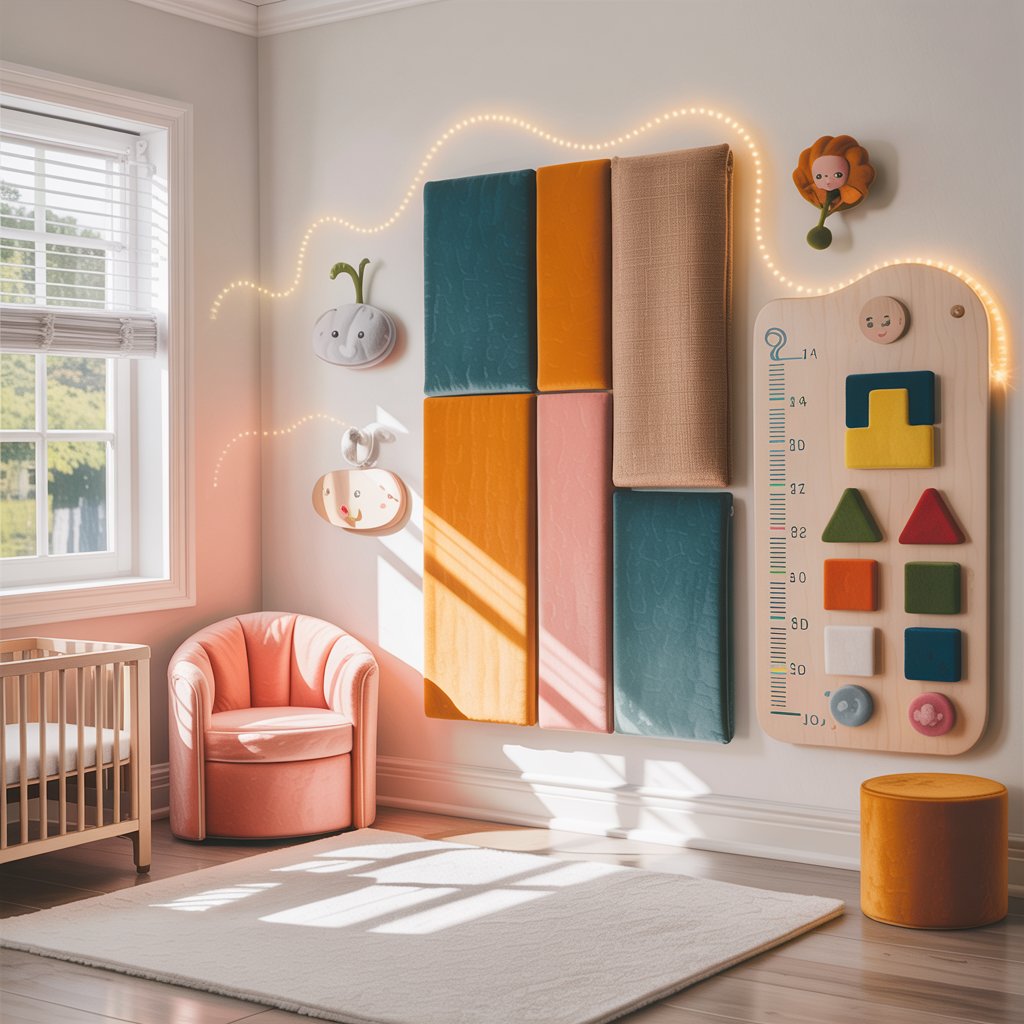
Pro Tip: Install interactive elements at baby’s eye level (about 24-30 inches from the floor) for maximum engagement during tummy time and early sitting.
Multi-Functional Furniture for Growing Children
- Convertible cribs that transform into toddler beds
- Changing tables that become dressers or desks
- Growth chart furniture that tracks height over time
- Modular storage that reconfigures as needs change
The most valuable nursery investment in 2025 is furniture that grows with your child, reducing the need for complete room overhauls at each developmental stage. According to The Every Mom, convertible furniture is becoming the standard rather than the exception as parents seek to maximize their investment while minimizing waste.
When selecting multi-functional pieces, prioritize quality construction and timeless design that will remain appealing through multiple life stages. A well-chosen convertible crib can serve from newborn through early elementary school, while a changing table that converts to a dresser provides decades of use.
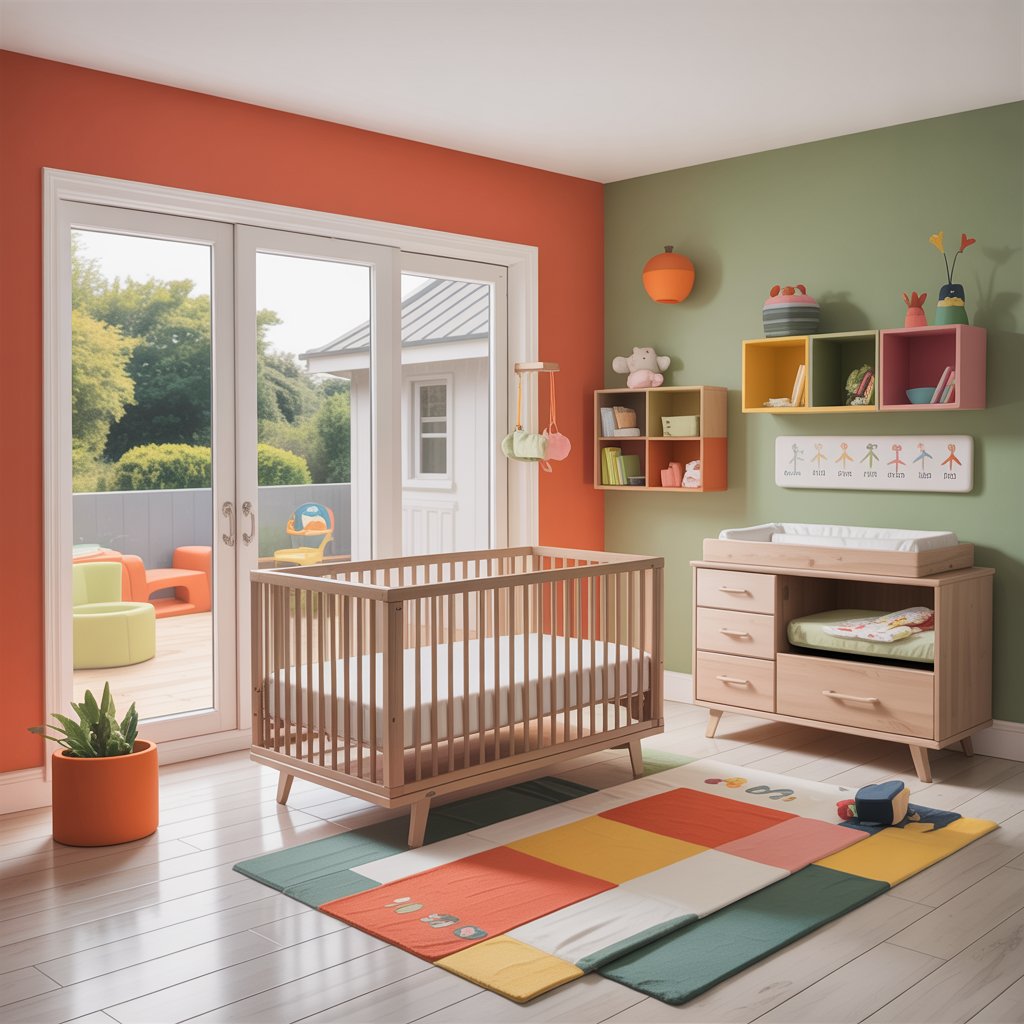
Pro Tip: Choose furniture with neutral finishes that can adapt to changing decor styles as your child grows and develops their own preferences.
Personalized Photo Walls: Capturing Precious Moments
- Monthly milestone photos displayed in cohesive frames
- Custom photo murals featuring family images
- Growth chart photo displays that track development
- Digital frames that cycle through photos with changing themes
Personalized photo walls have evolved from basic baby photo displays to sophisticated storytelling elements that capture your family’s unique journey. The 2025 trend emphasizes curation over quantity—selecting meaningful images that tell a cohesive story rather than filling every available space. According to Better Homes & Gardens, the most successful photo walls incorporate a mix of professional portraits and candid snapshots that reflect your family’s personality.
Create a chronological display that begins with pregnancy photos and continues through baby’s first year, using consistent framing to maintain visual cohesion. Consider adding handwritten notes or dates on the back of photos for future reflection.
Pro Tip: Install a mix of floating shelves and picture ledges to create depth and dimension in your photo display, allowing you to easily update images as your child grows.
Final Thoughts
Your nursery is more than just a room—it’s the backdrop for your child’s earliest memories and your family’s foundational moments. As you implement these 2025 nursery decor ideas, remember that the most important element is creating a space that feels authentic to your family. Whether you choose a nature-inspired sanctuary, a minimalist retreat, or a vibrant themed environment, the key is designing with intention and flexibility. The best nurseries evolve alongside your child, adapting to changing needs while maintaining their core purpose as a safe, nurturing space. Start with the essentials—safety, comfort, and functionality—then layer in personal touches that reflect your family’s story. As The Bump reminds us, the most beautiful nurseries aren’t those with the most expensive decor, but those that create the perfect environment for love, growth, and discovery to flourish.
